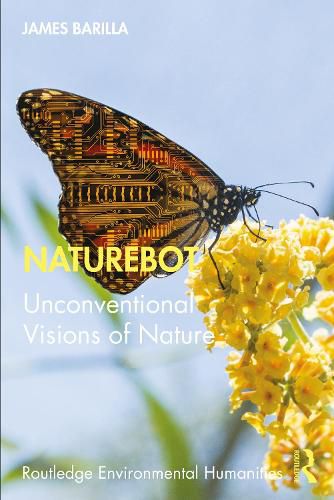Readings Newsletter
Become a Readings Member to make your shopping experience even easier.
Sign in or sign up for free!
You’re not far away from qualifying for FREE standard shipping within Australia
You’ve qualified for FREE standard shipping within Australia
The cart is loading…






Naturebot: Unconventional Visions of Nature presents a humanities-oriented addition to the literature on biomimetics and bioinspiration, an interdisciplinary field which investigates what it means to mimic nature with technology.
This technology mirrors the biodiversity of nature and it is precisely this creation of technological metaphors for the intricate workings of the natural world that is the real subject of Naturebot. Over the course of the book, Barilla applies the narrative conventions of the nature writing genre to this unconventional vision of nature, contrasting the traditional tropes and questions of natural history with an expanding menagerie of creatures that defy conventional categories of natural and artificial. In keeping with its nature writing approach, the book takes us to where we can encounter these creatures, examining the technological models and the biotic specimens that inspired them. In doing so, it contemplates the future of the human relationship to the environment, and the future of nature writing in the 21st century.
This book will be of great interest to students and scholars of biomimetics, environmental literary studies/ecocriticism, and the environmental humanities.
$9.00 standard shipping within Australia
FREE standard shipping within Australia for orders over $100.00
Express & International shipping calculated at checkout
Naturebot: Unconventional Visions of Nature presents a humanities-oriented addition to the literature on biomimetics and bioinspiration, an interdisciplinary field which investigates what it means to mimic nature with technology.
This technology mirrors the biodiversity of nature and it is precisely this creation of technological metaphors for the intricate workings of the natural world that is the real subject of Naturebot. Over the course of the book, Barilla applies the narrative conventions of the nature writing genre to this unconventional vision of nature, contrasting the traditional tropes and questions of natural history with an expanding menagerie of creatures that defy conventional categories of natural and artificial. In keeping with its nature writing approach, the book takes us to where we can encounter these creatures, examining the technological models and the biotic specimens that inspired them. In doing so, it contemplates the future of the human relationship to the environment, and the future of nature writing in the 21st century.
This book will be of great interest to students and scholars of biomimetics, environmental literary studies/ecocriticism, and the environmental humanities.